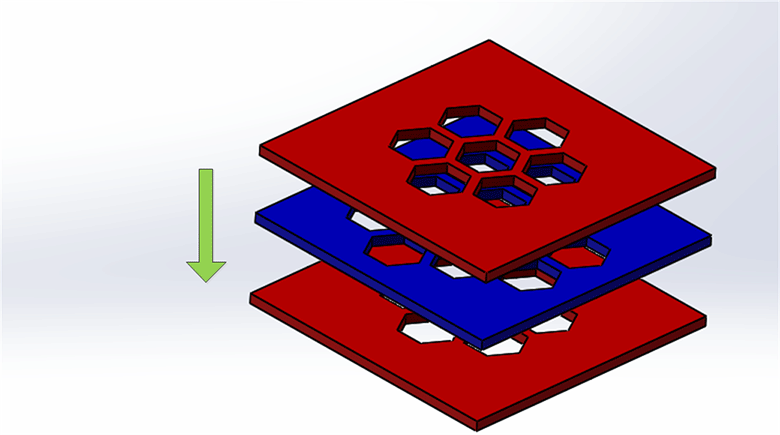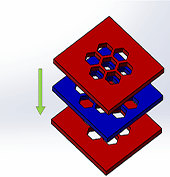
Seeding and patterning of cells with an engineered scaffold is a critical process in artificial tissue construction and regeneration. To date, many engineered scaffolds exhibit simple intrinsic designs, which fail to mimic the geometrical complexity of native tissues. In this paper, a novel scaffold that can automatically seed cells into multi-layer honeycomb patterns for bone tissue engineering application is designed and examined. The scaffold incorporated dielectrophoresis for non-contact manipulation of cells and intrinsic honeycomb architectures are integrated in each scaffold layer. When a voltage was supplied to the stacked scaffold layers, three-dimensional electric fields were generated, thereby manipulating cells to form into honeycomb-like cellular patterns for subsequent culture. The biocompatibility of the scaffold material was confirmed through the cell viability test. Experiments were conducted to evaluate the cell viability during DEP patterning at different voltage amplitudes, frequencies and manipulating time. Three different mammalian cells were examined and the effects of the cell size and the cell concentration on the resultant cellular patterns were evaluated. This honeycomb-like scaffold and the dielectrophoresis-based patterning technique examined in this work could provide the field with a promising tool to enhance seeding and patterning of a wide range of cells for the development of high-quality artificial tissues.
Keywords: Cell patterning, Cell viability, Dielectrophoresis, Scaffold

